Across centuries — and endless transformations — the silhouettes of our clothing have spoken to societal values, social movements and the cultural moment at hand. The sexual revolution of the 60s saw the invention of the miniskirt: micro hemlines that flouted conservative, old-guard attitudes. In the 80s, women surged into the workforce wearing massive, powerful shoulder pads. The 90s brought with them grunge, all layered and shapeless and anything but straight-laced.
So what shape does today’s fashion take? And what does it say about the world we’ve living in right now? In 2021, a cohort of emerging designers are experimenting with silhouette to speak to the current, post-pandemic moment. From one perspective, this might mean evocations of comfort and security: padded appendages, knife-like pleating, hooped skirts that cast a protective (social distanced?) circle. From another, it celebrates the body in its many forms. Here, we speak with designers Jisoo Baik, Myung Cha, Shirley Tang and Chelsea Kaya about creating the silhouettes that are embodying today’s zeitgeist — in fashion and beyond.
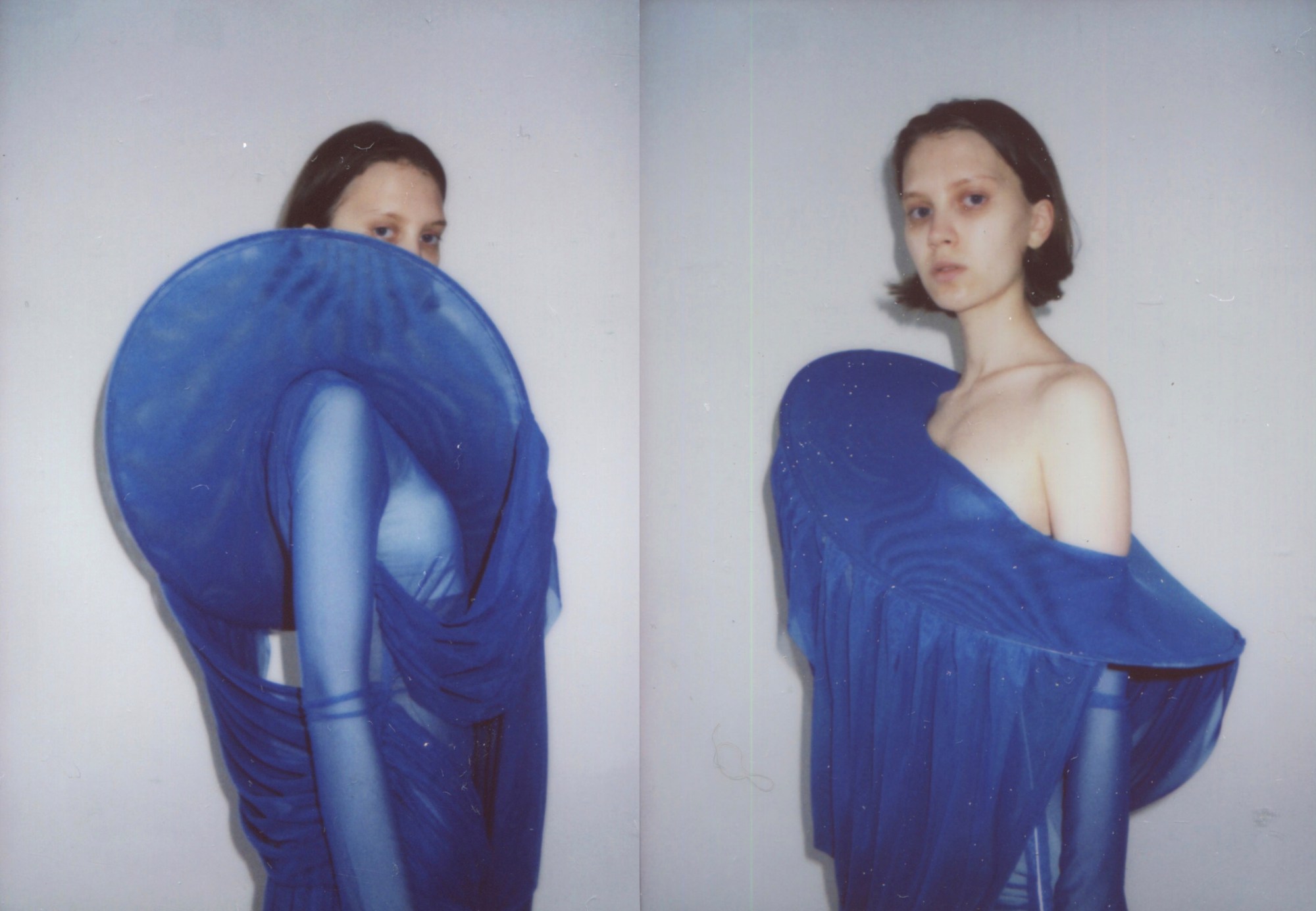
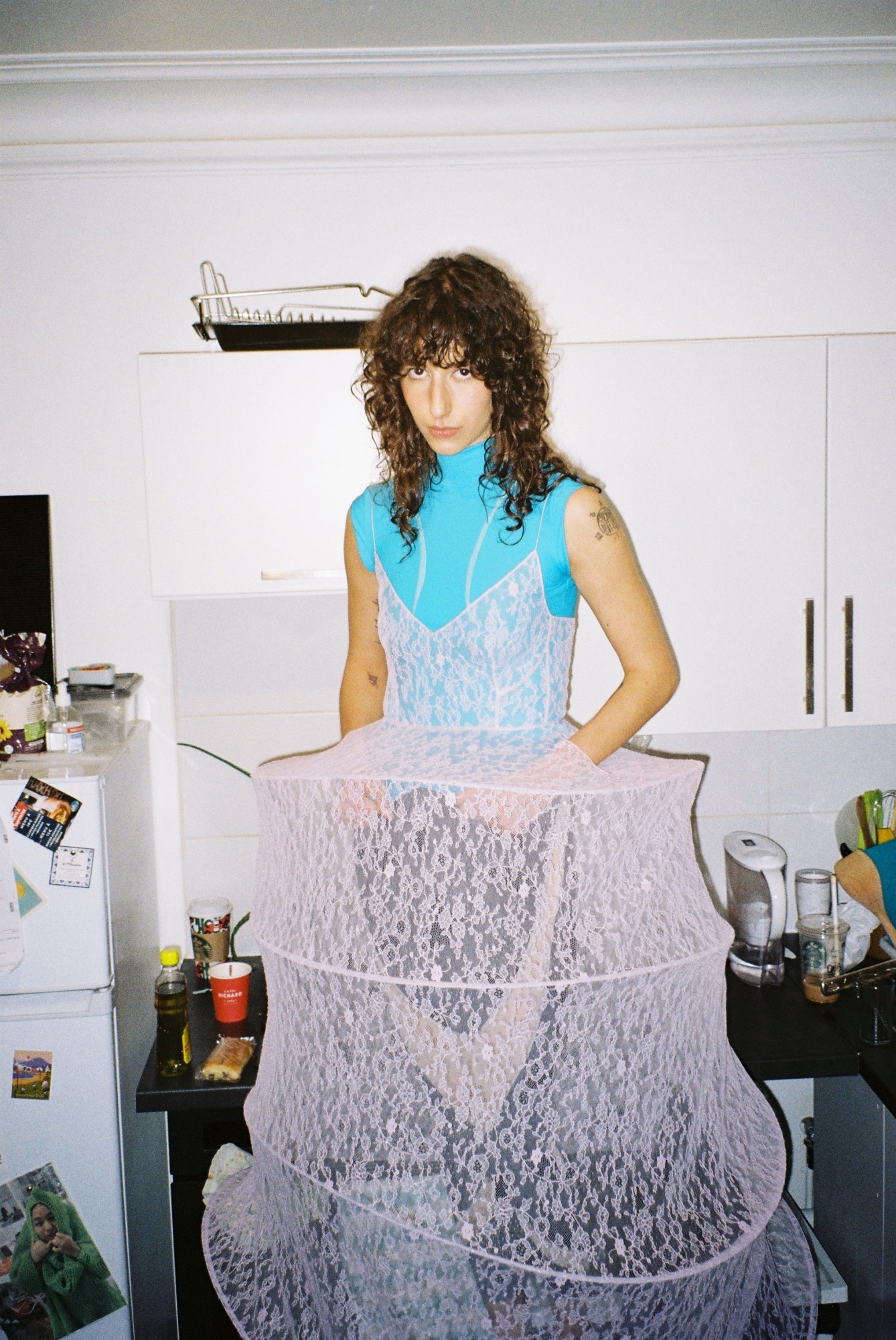
Jisoo Baik
Born in Seoul, South Korea, designer Jisoo Baik studied at London’s Central Saint Martins before completing her MA in Paris at the Institut Français de la Mode. Her ‘Safe Space’ collection explores notions of security and protection using wire structures.
What’s the concept behind your ‘Safe Space’ collection?
It’s about creating a safe space where you can be yourself. It’s inspired by ideas of security and protection. Since moving abroad, I’ve been worried about trying to keep myself safe, especially while walking on the streets, and my concern intensified after a traumatic experience where my phone and wallet were stolen. That experience pushed me to research how individuals carry their possessions with them, each in their own way, on the street.
How does the body inform your work?
For me, the body is a part of the process of making garments for fitting, like a framework.
How does wearability factor into your design process?
In my design process, wearability is secondary to deciding on the silhouette. I think wearability is part of a calculative process, rather than a creative design process. However, it’s important for me to deliver sufficient comfort and solid wearability to the wearer.
Could your pieces exist as autonomous works, without being related to the body?
I put my own perspective into my work and each piece is completed with techniques that would best represent the ideas behind it. That’s why I believe my pieces could exist as autonomous works. I wish for people to see my work in their own way, through their own experiences, not just limiting them as ‘clothes’. I think my pieces, especially with wire shapes, could exist as a sculpture or object.
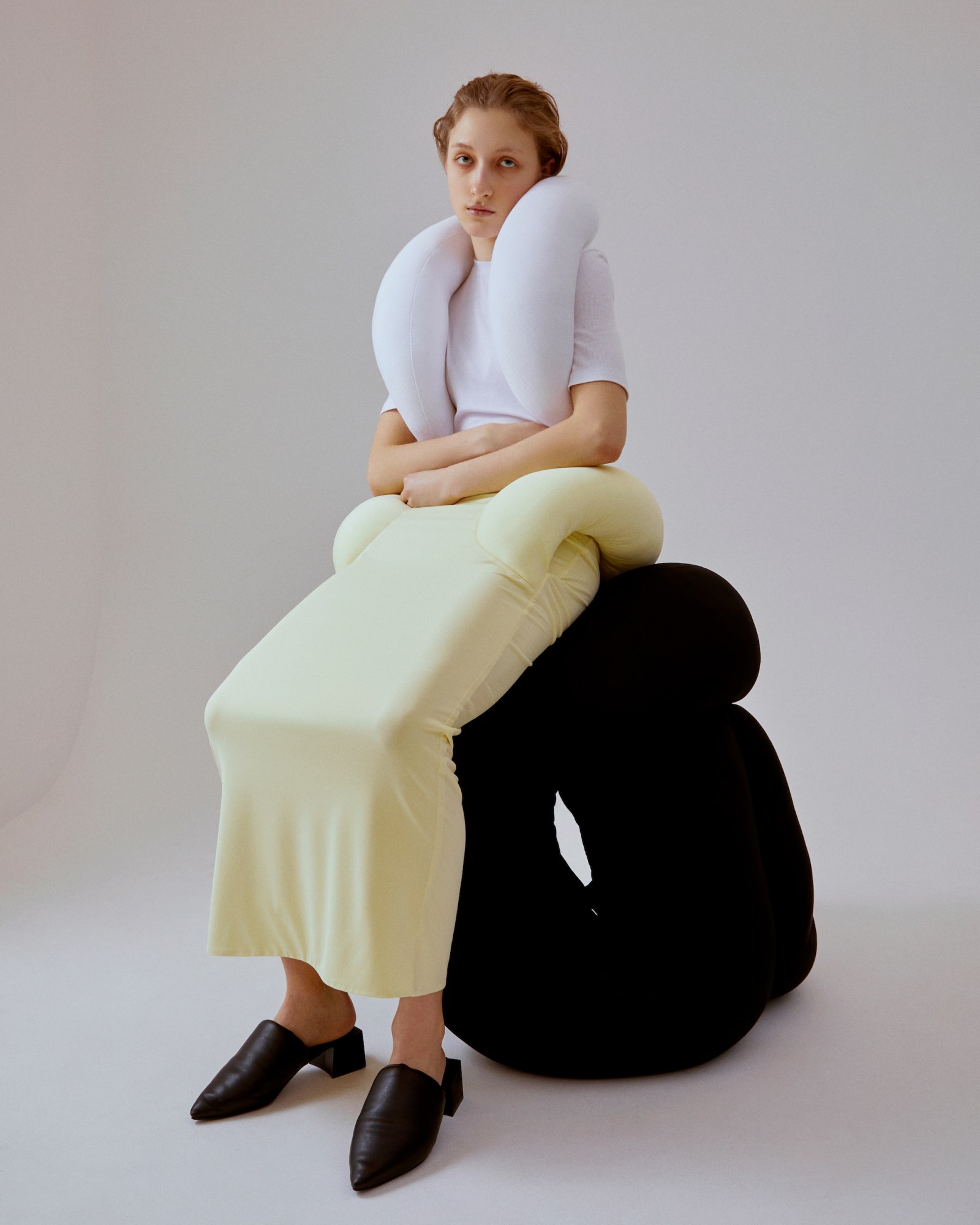
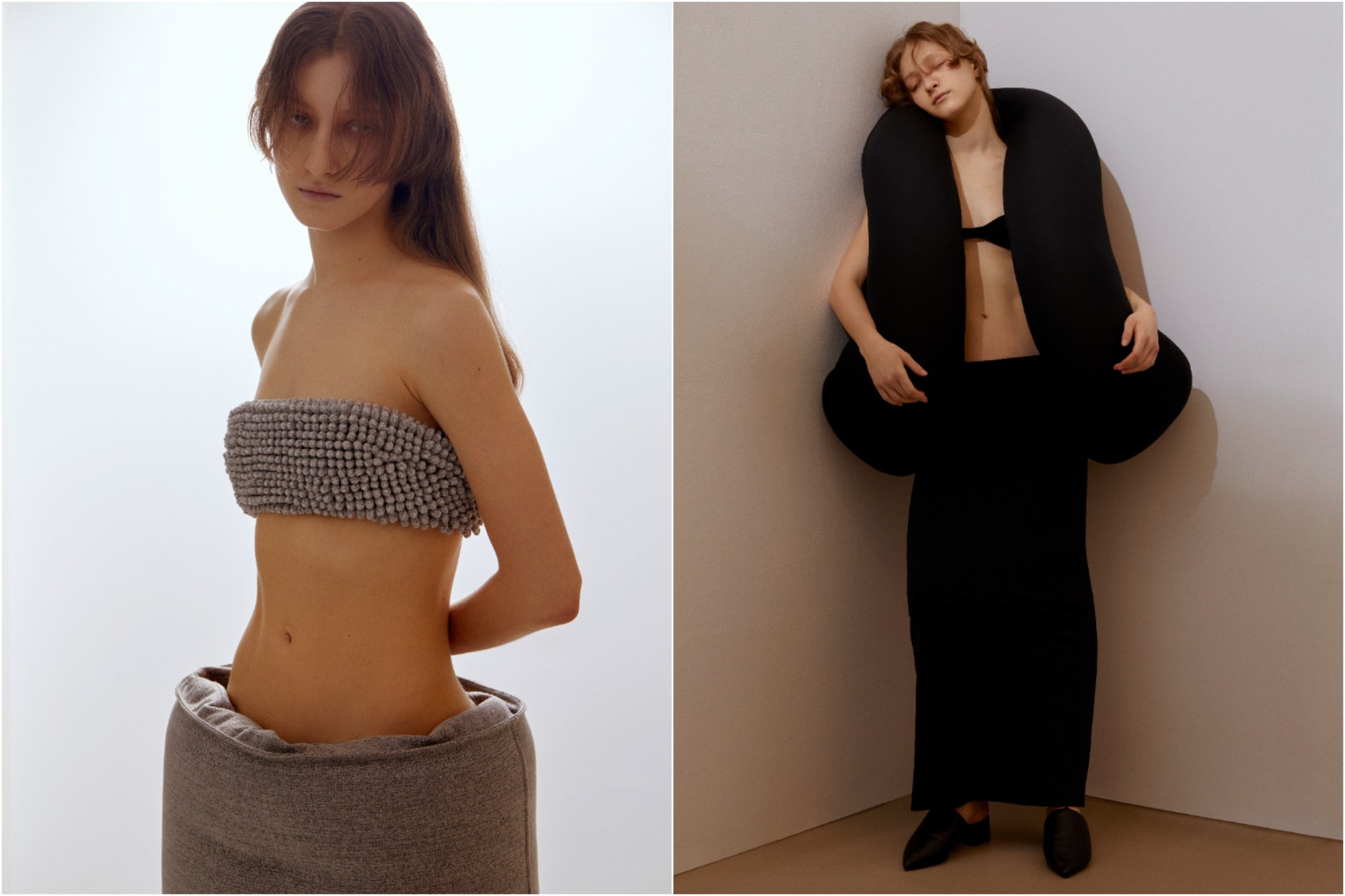
Cha Myung
A student in CSM’s MA Fashion program, Cha Myung uses silhouette to create a “new image of woman”. Her most recent collection draws on the padded shapes of body pillows to evoke feelings of comfort and serenity.
What’s the concept behind your collection titled ‘A Journey of Seeking Comfort’?
After I travelled back to Korea last year, I was forced to self-quarantine at home. During that period of rest, I was using a body pillow for comfort and was observing how I was interacting with the pillow, how it was filling up the empty spaces between my body and the wall or the floor. This experimentation brought me the key structures and forms for this collection. Being physically comfortable is very important for me to have mental serenity and I’m very into how the physical interactions between my body and supports, like pillows, work visually. I designed each piece to give comfort to the body during wear and also to give off a comfortable appearance, visually.
How does the body inform your work?
I create clothes with bold silhouettes and unconventional structures that challenge traditional women’s clothing. I also don’t follow the typical way of revealing women’s bodies. The shape of a woman’s body, itself, is very attractive and beautiful to me, so I make good use of its curves and silhouette, but recreate and build a new silhouette by adding volume or making garments bold and sculptural.
How does wearability factor into your design process?
I’ve focused more on the conceptual side rather than wearability, so far, because expressing what I want to say through fashion motivates me to continue and develop my work. In the ‘A Journey of Seeking Comfort’ collection, there are clothes that can be uncomfortable to wear in real life due to their large and bulky shape. But there are also some pieces that are comfortable enough to be worn day-to-day. In the future, I want to create a collection that’s more developed in both wearability and concept.
Could your pieces exist as autonomous works, without being related to the body?
Some pieces look like real cushions or pillows when they’re not being worn because they were directly inspired by the shapes of pillows and sofas. I didn’t intend to make the pieces function as sculptures or artworks, but since most of the pieces have a strong three-dimensional effect, about half of the collection maintains its shape even when placed in space by itself. One piece, for example, is entirely square-shaped, like a pillow, without being placed on the body. In fact, it can even be used as a cushion.
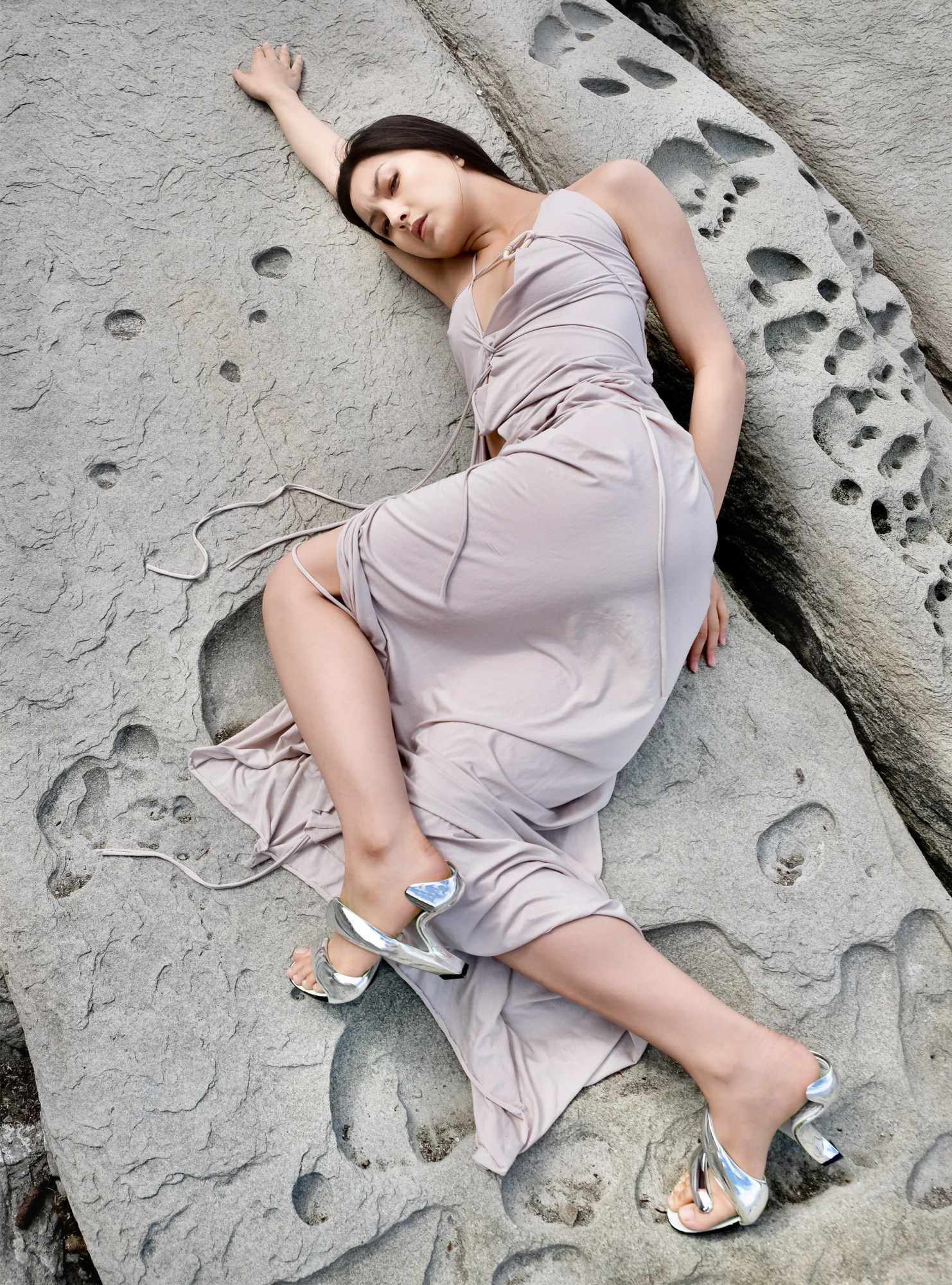
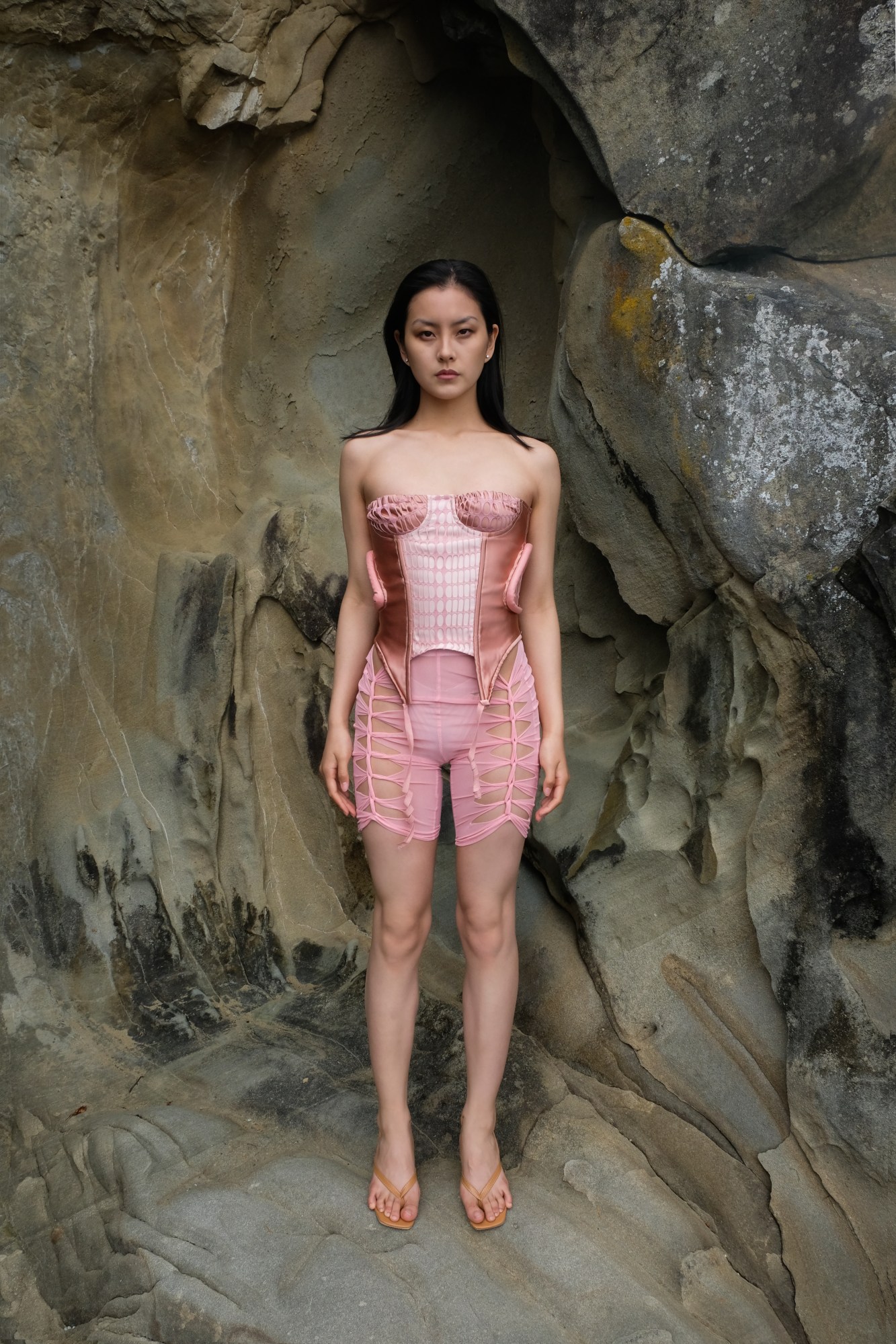
Shirley Tang of ORIENS
Born in Shanghai, Shirley Tang moved to Vancouver and then New York to pursue her BFA at Parsons. She describes her label, ORIENS, as a ‘Space Future Body Experiment’ that draws upon the juxtaposition between garment and body, artificial and natural.
How did you become interested in designing clothing?
I’ve always relished the chance of dressing myself, even though a lot of my younger years were spent at a uniformed school. I think the experience actually created a kind of intrigue and a preciousness about the choices and possibilities of dressing and transformation. I played around a lot with my own clothes and some of my parents’ old clothes when I was younger — cutting, slashing and attempting some very crude tailoring. In the process, I definitely ruined some beautiful pieces from my mother in trial and error, but I’m very thankful to have been allowed to experiment like that and be able to continue today.
You describe ORIENS as a “Space Future Body Experiment”. What does that mean to you?
Futurism has really strongly impacted my designs. This idea of perpetual forward motion is at the core of ORIENS — it’s own name is derived from a Latin root word for the rising sun on the eastern horizon. I like this idea of something existing on the horizon of now and the future, merging juxtapositions, and the cyclical nature of moving forward and upwards. Hence experimentation is also central to ORIENS. Even though space futurism might bring to mind alien entities or robotics, so much of it — especially applicable today — is unwaveringly rooted in biology. I love the idea of this synergy of artificial and natural, machine and man, curated garments against natural bodies and this interaction which serves and honours the body with intent and reverence.
How does the body inform your work?
The body is central to any design I make. Garment and body are so interactive by nature, and I want my garments to serve the body, to highlight, conceal, manipulate and suggest shapes and lines underneath. The feminine form is so complex and interesting as a subject, and I love for pieces to blur the lines between garment and body, using the body’s own landscapes and shapes as a part of the whole design, sort of bringing the inside out. I have been exploring an idea about doing that literally as well, having lines be informed by traditional Chinese “Qi” or energy lines that make up the map of body meridians.
How does wearability factor into your design process?
I love complex and intricately detailed designs, but I like them to feel wearable as well. Along with the adjustable and manoeuvrable elements that appear often in my work — emphasis on stretch, adjustable ties and open closures — I want them to exist as distinct, uninterrupted and strong designs that are malleable and able to integrate with the wearer’s own pieces and styling.
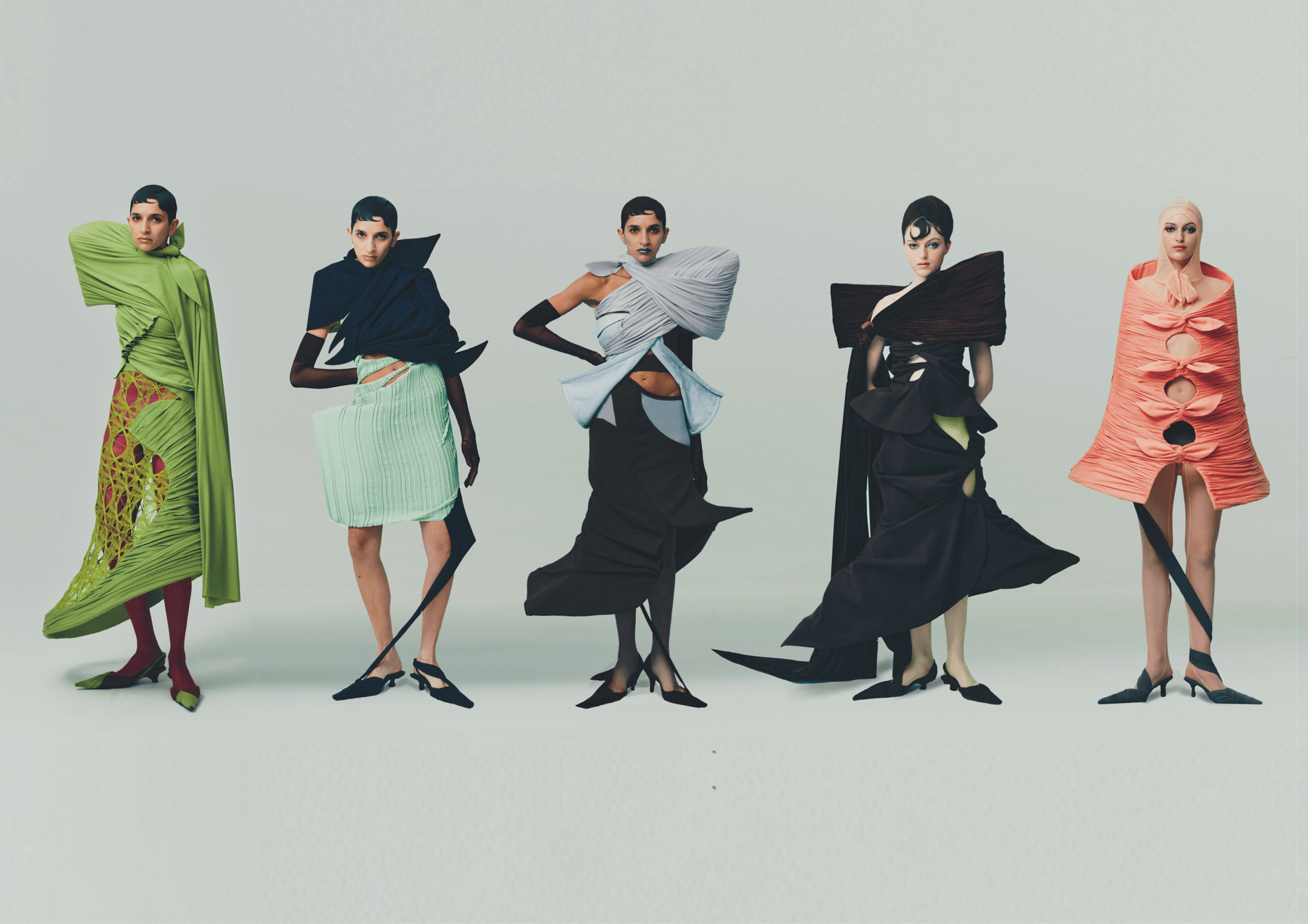
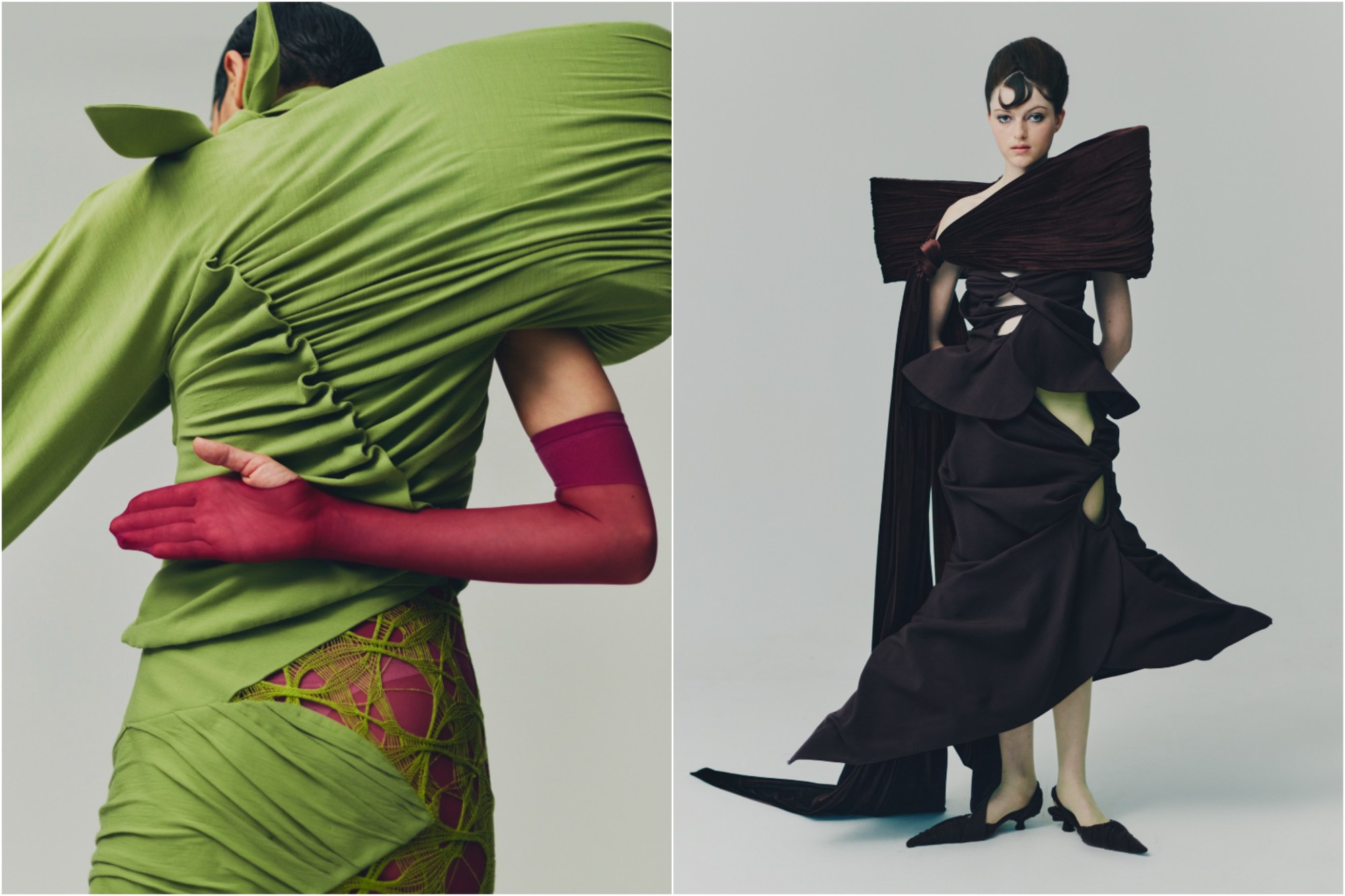
Chelsea Kaya
Japanese-born designer Chelsea Kaya studied womenswear CSM, graduating in 2021. The elegant, sculptural designs of her graduate collection coalesce around the themes of tension, nostalgia and femininity.
What’s the concept behind your CSM graduate collection?
I think fashion should always have a purpose and a message that we’re trying to deliver, and mine is spiritual and sensorial. [The collection] was inspired by the power of wisdom within dried flowers, and the beauty found in the imperfection and asymmetry of nature. It came to me when I noticed people’s current obsession with youthful attractiveness, and their neglect of beauty that isn’t seen on the surface. It’s the kind of beauty that comes from the nostalgic approach of my grandmother.
I was inspired by memories from my upbringing in Japan, of women wearing office clothes in the tube stations during rush hour. The concept is to provide real aspects of a working woman’s wardrobe that could be more enjoyable and unique for them to wear in everyday life. The women I remember seeing in Tokyo, especially in the central area, gave me this feeling of the tension that was keeping them in a place where it’s difficult to show a different side of themselves.
How does the body inform your work?
A lot. The garments should emphasise the parts that we are confident in, but they also serve as an armour that protects against fear and vulnerability. I grew up in a very conservative and traditional Asian family, but was educated with a much more Western cultural background. It gave me the ability to see different perceptions of beauty within the West and the East. It’s interesting to think how Helmut Newton and Araki photographed the same subject — the “woman’s body” — but the result was so different in the images that they captured. My approach is to blend my knowledge of both in a way that speaks to my culture and identity, and that showcases my own interpretation of contemporary women.
How does wearability factor into your design process?
It was quite challenging because I wanted to make sculptural shapes but with a very refined silhouette that you’re able to tell is a wearable garment. The whole purpose was to create a silhouette that women are able to wear practically. So even if they’re seemingly abstract, I still tried to achieve the effect of functionality.
Could your pieces exist as autonomous works, without being related to the body?
I would describe my works as wearable sculptural pieces. They’re incomplete without being worn, and some of the tension and tactility are only seen when they’re on a body that stretches them out.




